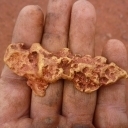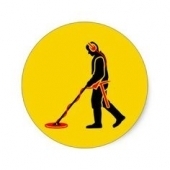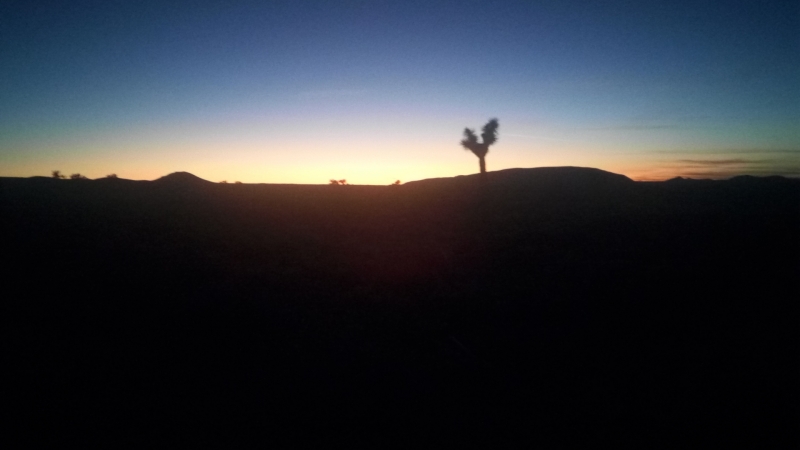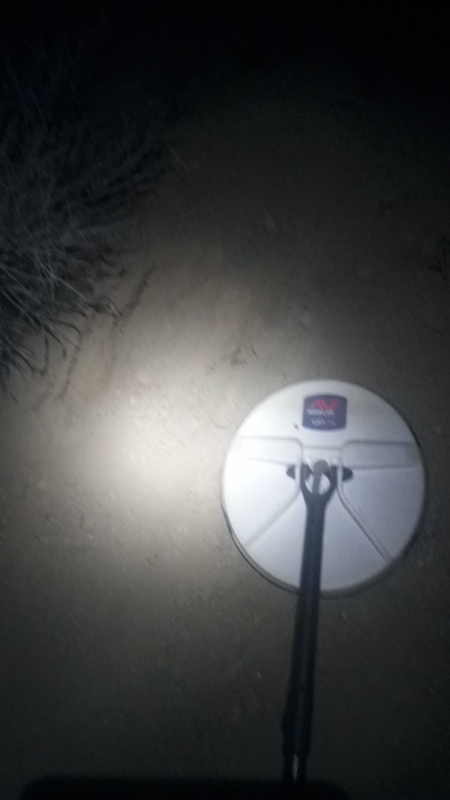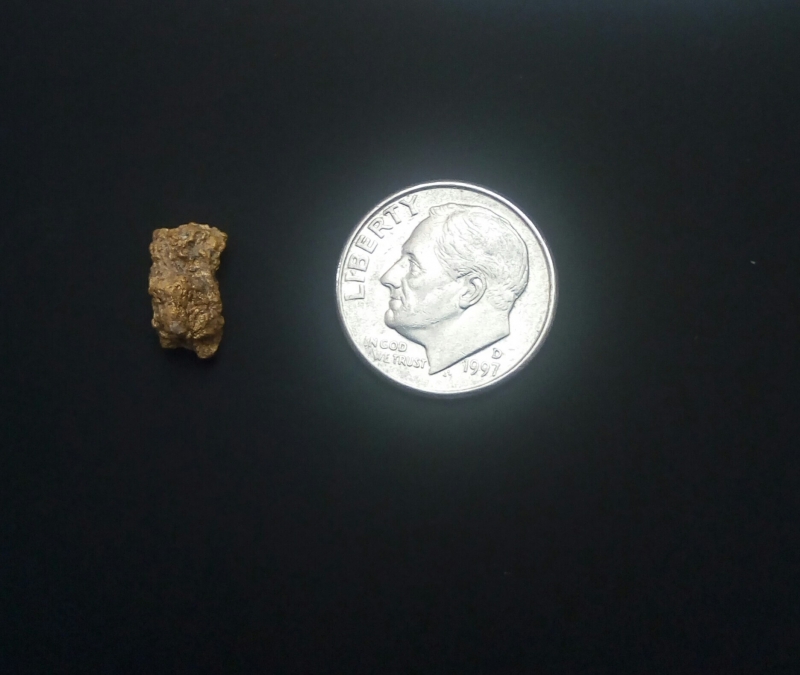Leaderboard
Popular Content
Showing content with the highest reputation on 11/14/2017 in all areas
-
I started missing gold as soon as I started detecting, and this is the sad saga of just how much. Wedderburn in the north of the central Victorian goldfields is where I found my first color, and Schicer gully was where I lost my detecting virginity. A little piece of a few grams beneath a tree. After finding no more there, my mate at the time (who first introduced me to prospecting with a detector) and I moved to Beggary hill, just to the north of Wedderburn, where we found a patch of small colors on the side of the hill. I was trying to learn as much as I could about this detecting game by making friends with some of the guys who knew a bit about alluvial gold and where it could be found with a detector. I had learned about 'surfacing', and the importance of detecting around these areas, so a patch of shallow surfacing nearby captured my attention, but there where so many old tin cans that I gave up on it after a few hours. A local chap that I had become friends with lived in the town and had a mate who made his own rum. On a regular basis I would drop in to his place with a couple of bottles of Coke, and we would talk about gold. On my arrival one night he brought out a pillow case in which was wrapped a very large nugget. It contained a little ironstone, and was a magnificent piece that weighed 84 ozs. His son and two of his mates had found it using an early Whites detector that my friend Luke had loaned to the kids for a school project on gold prospecting. He then bought out a local map to show me where the kids had found it. Well, you guessed it. Down by the fence among the tin cans where I had given up on Beggary hill.10 points
-
Post script 3. After hearing the story from the Ballarat boys about their aborted poaching expedition, I bought another round of beers, and asked them, "I've only detected around Dunolly a couple of times, but you blokes know this area pretty well don't you? I'd hate to go home to the 'better half ' with nothing to show for my time here. Is there anywhere you can think of where I might pick up just a small color or two?" After a bit of thought, one of the boys suggested I try a spot at Patchy Flat, which was just off the Timor road. "When you get to the tree line turn right, and a few hundred meters along the track you will see where a claim has been worked on the left. There is a gap of about twenty meters between the worked ground and the fence marking the edge of the private property. We've picked up a few bits there, so if you go slow and poke around the bushes you might get something ". I thanked them for the information and they left. That night I told John of our conversation, and we agreed that we would pay a visit to Patchy Flat the next day as he had picked up some information about some ground on the left side of the road. Ian was at home with the flu at the time. Taking two cars we separated at the tree line and went to our spots. I found the worked claim without difficulty, and taking out 'the unfair advantage', ( prototype PI ) set it up and ground balanced. The 'scrape and detect' claim had been worked and rehabilitated to the edge of the track, leaving the track and the unworked ground between the track and the fence. I decided to grid out the track and then the ground out to the fence. I had only gone about ten meters or so when I got a nice broad hum on the left hand side of the track. Thinking it must be junk I started digging the rock hard compacted ground. When I got down about a foot I realized the ground was intact, and this signal was now unlikely to be rubbish. It was in fact a nice nine ounce slug. The next bit in the track was about five ounces, and by the time I had finished gridding it I was up over the twenty ounce mark with a lot of smaller colors. It was slow going as the track was like concrete, and it took me all day to finish it. John had got a few colors where he had been working, so we phoned Ian and told him of the new spot. Next morning he turned up coughing and spluttering, but determined not to miss out on the fun. We went back to finish the ground between the track and the fence, where I managed to dig a twenty and a fourteen ounce bit plus a few smaller bits, while John and Ian brought the total patch weight up to about sixty ounces. They never knew it, but the Ballarat boys had more than made up for their sneaky intentions, and the 'unfair advantage' had struck again.8 points
-
I`ve got a bench at home that`s been getting more and more cluttered and yesterday I decided to have a clean up. In amongst all this stuff, I came across a jar that had this speci in it. I have no memory of it, so I asked the better half about it, and she has no memory of it either, but seeing I don`t remember it she`s claiming ownership, and that`s OK because I really don`t think it`s mine. I recon there is at least a half a gram of gold in this piece and neither of us remember it. It may have been on the bench for 5 or 6 years7 points
-
After 2 years going solo on my prospecting trips I found out that by buying a caravan my wife would finally come prospecting with me. Originally we bought the caravan for trips away but she said she didn't mind if we took it away to prospecting areas now and again. The only downside is I had to buy something to tow the van so I bought a new jeep and she said no bush bashing in it as she doesn't want scratches or dents. My Prado is slowly getting destroyed with all the rough tracks and river crossings I do in it. So it looks like ill be doing lots of walking for the time being. The next door neighbor had an electric powered mountain bike which I bought but it needs a new battery. The bike does 80kmh, but I think I'll stick to 20kmh and at least get there in one piece. Should be really good to be able to ride across the country looking for potential gold bearing ground. Walking takes too long. Anyway, we took the van for its maiden voyage 6 weeks ago and the wife loved it. She reads a lot while I detected which seemed to work. Hopefully one day she might even have a go at detecting. There's nothing better than coming back to the van for a hot shower and a home-cooked meal. Usually, my solo trips consist of detecting from dusk until its dark, eating dry bread and a can of soup for dinner. Then crawling into the rooftop tent and going to sleep. As I only get to the Golden Triangle once a month I need to make it count. I found cooking/cleaning wasted to much time. Heck, i don't even have time to butter my bread so the butter stays home. A good day detecting for me is around 11 hours straight. And that's swinging the 18" Elite. Usually can only manage 2 days of that and then i want to go home. Besides, i think the family doesn't mind me going every month because there short trips. We're off again next week this time to Daylesford which is a nice little town. I'll probably get up at 5:00 am and detect until 10:00 am then take her out and go for a few walks. Got a new "SteelPhase sP01 Audio Enhancer" coming this week so that will be good to see how it compares to the B&Z booster. Heres a picture of our last trip. It was a stopover at Waanyarra on the way home. Ended up finding a few bits near the campground so that was a bonus.5 points
-
I'm not an expert on cleaning finds. But here are some points I try to abide by. I encourage others to chime in on their principles and techniques. (These are mainly for copper and copper-nickel alloys such as US nickel 5 cent pieces. All my (few ) silver finds look like the day it was dropped and your Merc appears to have been similar, but you still may need to get some mud off of them. -1) The best way to avoid damaging a coin is to leave it alone. But eventually someone (probably you) is going to have to figure out the date and mintmark. Just err on the side of caution until you have those identified. 0) First goal is to find the date and mintmark without damaging the coin. 1) Abrasives are the enemy. (Unnatural discoloration also, but pennies and nickels are already going to be discolored from being in the ground.) Besides abrasives in the cleaning matereials, just the soil that coats/cakes the find is trouble. So never rub the find in the field. 2) Water is a good solvent. I like to add a bit of very mild detergent (caution: this may be bad advice). I use a splash of car wash liquid which is less harsh than dishwashing liquid. 3) Time is generally your friend (more on that later). Exception is when using acids, alkalis, and some solvents which I'm not going to even touch on here. Maybe this should have been higher on the list.... 4) Be careful of soaking unlike metals. I don't know which work bad together but I avoid including iron and aluminum with coins (hey, sometimes objects made of these can be valuable) and try not to include Zincolns, which you can get very good at ID'ing right out of the ground because their fast loss of material while in the ground and their horrendous growths. A Zincoln that's been in the ground makes a good wood file by itself (and that's about all it's worth). Another way to separate zinc from copper is by mass or weight. Copper pennies start out (new) at about 3.1 g. Zincolns start out about 2.5 g and go down quickly once in the ground. 5) Remember rule 0 -- you don't need to clean the entire coin, just get to the date & mm. When I was young I could read any date that wasn't eve remotely present with my naked eyes. Now I need strong magnification and lots of bright light. Something in the neighborhood of 10x power works well for me, but find your own optimal combination of size and power. My favorite tool is a 50+ year old spark plug inspection light/magnifier I got from my uncle, but I don't even know if these are still made. 6) After the abrasives are soaked/flushed away from the date & mm areas, find those and then look up the values. Here's a good website for that: https://www.pcgs.com/prices/ Keep in mind that a) these are retail prices, and b) the value depends strongly on the grade. Anything in the 60's (mint state) cannot be found in the ground and most finds will be in the low numbers. But 35's and 40's are possible. Figuring out the grade is a step unto itself that I won't go into. But if the chart on this website doesn't show a value then either it's so rare (and valuable) that they don't have an established price (that would be nice!) or 99.99999% it just doesn't have numismatic value, in which case you're talking metal content value and personal pride/satisfaction/aesthetic value. Another good place to look if this page shows value is Ebay prices realized, but that takes more searching. Still, you'll also get a handle on the condition (grade) most of the time. 7) If your research up to this point shows the coin may have collector value, stop cleaning it and get expert help/opinion, e.g. coin dealer, and make sure it's one you trust. ['Trust' meaning a) honest, and b) know what they are talking about.] This is like anything. Just because someone works in (or even owns) a coin shop doesn't necessarily make him/her an expert. The Professional Numismatic Guild (PNG) https://png.memberclicks.net/find-a-png-dealer members are the ultimate in integrity (and at a minimum high up in expertise) but there aren't that many of them. Getting multiple opinions is always a good idea, and beware of the first offer.... 8) If you find the coin has no value you can do as you like, but if you want to make the coin presentable you might still want to keep going here. 9) (Learned this from posters SwampstomperAl and DeftTones). Soak in olive oil for a LOOONNNNNGGGGGGG time (as in months). See step 3 above. 10) Once the abrasives are gone (make sure!) you can use soft things like wood and your fingernail, but take it easy as you go. These items can separate the attached chunks of contamination, but they don't always work. And even soft things can cause microscopic damage which the experts will notice. Don't assume that soft cotton (handkerchief, washcloth) won't damage. Ever get lectured by your optomitrist/optician??) 11) I've read (here and elsewhere) of people using abrasives to clean pennies and nickels to make them look presentable and I'm not going to argue with that. But just make sure the coin has minimal numismatic value before going that route, since it's irreversible. 12) Regarding the color, even for coins with no numismatic value, it's worth noting that a different than original color may actually enhance the appearance if it's naturally occurring. This is particularly possible with copper coins. Coins that have obviously been cleaned lose much of their appeal in the view of many. And, again, unnatural colored surfaces are a huge detriment to a coin's value, assuming it's otherwise a collectible date&mm. That was kinda long (typical for me). Hope it's accurate and, again, I encourage others to chime in with their knowledge and techniques, especially if you see something I said which is wrong.5 points
-
Hello all and happy Monday. I was able to get out for the day yesterday and decided to tackle an area I have been researching in the local forest. An old trail camp site with no car access. This place has a lot of history even before the Forest service took it over and made it a public camp. I hiked in and brought my X705 with the Elliptical coil - I should have brought my 6" DD for where i was at, but the Elliptical worked OK. I just focused on two sites with the 2 hours I had to hunt. I was stoked to score my first piece of Silver - 1940 Merc. and then a nice 1955 Wheatie. Kept going and what was ringing out like a solid Nickel, ended up being a nice Titanium ring!! Also lots of Pennies, Dimes and Nickels with most dating in the 60's and 70's. As I was hiking up and out of the Canyon, I came across this.. I was very happy on my drive home and I feel confident that I have found some virgin ground that I can go back to again. I want to back-pack in some time and spend the night for a real good hunt. that would be fun.4 points
-
Cheers Northeast, I wish I was finding a lot of gold. Just have a few good runs now and then, but the truth is only getting out 2 days a month makes it pretty hard to find new patches. Sometimes I have 10 or more spots marked on the GPS and give each spot 1 hour and if nothing turns up or I don't like the look of the spot I move on. I love prospecting and the thrill of the hunt. The golds a bonus. Just happy that the wifes taken a small interest in my hobby.4 points
-
Jin, all I can say is that I have never dug deeper holes with anything since the prototypes.4 points
-
5F×8 (used in EQUINOX 800*) 5F×8 (Five Frequency Times Eight) provides five individual transmit frequencies in the one metal detector, selectable at the push of a button. Each transmit frequency optimises the detector for different size targets and conditions. EQUINOX 800 offers 5 single frequencies of 5, 10,15, 20, and 40 kHz, giving an 8 times range or ratio from 5 to 40, hence the 5F×8 technology designation. The individual selectable frequencies in EQUINOX 800 are: 5 kHz - Great for large silver coins 10 kHz - Good for small Roman hammered coins 15 kHz - A good general treasure detecting mode 20 kHz - Ideal for general treasure detecting and gold prospecting 40 kHz - Optimum sensitivity to very small gold nuggets Having five selectable frequencies gives the versatility that is equivalent to five conventional single frequency detectors. Note that EQUINOX Series detectors also feature Multi-IQ technology which allows you to operate all available single frequencies plus more, simultaneously. The option to operate your detector in a single frequency can be helpful if you are experiencing excessive ground noise when using the Multi-Frequency setting. *The Equinox 600 3F×3 (Three Frequency Times Three) offers three single frequencies of 5, 10, and 15 kHz, giving a 3 times range or ratio from 5 to 15, hence the 3F×3 technology designation. However, both the Equinox 600 and Equinox 800 offer identical Multi-IQ modes covering the full frequency range. The Equinox 600 simply disallows direct access to the 20 khz and 40 kHz single frequency modes. More on selectable frequency and frequency spread here.3 points
-
Yeah Jin, that's the one, but the kid's name was Turner, not Yurner. The families got greedy and started a big legal battle over the rights. By the time it was over there was no money left after the lawyer vultures took their cut. The detector was a Whites that belonged to Adam's dad Luke, and Adam was the one who detected the nugget, but the other parents stuffed it up. GREED.3 points
-
egixe14, you really know how to hurt a bloke, don't you? You got me thinking of all the big gold I've missed over the years, so I'm going to start a new post listing the gold I've missed.3 points
-
A question to either Reg or jrbeatty if they care to answer. I was wondering if there is a lot of difference between the prototypes you were using and what's available today? Now I know that today's detectors are better at finding the small stuff and probably handle hot ground better, but do they actually go deeper? Let's say for argument's sake that you had 5 patches of gold-bearing ground that the prototype handled ok and you grided and worked those patches to death, did a later model detector find gold "AT DEPTH" that you missed with the prototypes? (Surely you would have revisited some of those patches with new release detectors.) Or did those prototypes do a pretty good job?3 points
-
2 points
-
(Thanks for the compliment, Steve.) Show me someone who doesn't like a Mercury dime and you're looking at someone with a missing spot in their artistic appreciation. Among US copper/nickel/silver my favorites in regards to beauty are the Walking Liberty Halves and Morgan dollars, but all series that immediately precede the 'famous American' issues are quite attractive, IMO. You've made a good list. I'll add/comment on a few. For the Merc series you mentioned the 1919 mintmarked which I'm not aware are scarce. However both the 1921 (plain) and 1921-D are semi-keys, although nothing touches the 1916-D in that series. Among the Walking Liberty halves, I'd include the 1916 plain and -S, the 1917-S on obverse, the two 1919's you didn't mention (plain and -S) and the 1921-S. Just about anything in the first few years (say up through 1923) with a mintmark is tough. 1938-D is the only scarce issue of the later years, but I think a lot of those were salted away because their value doesn't match their low mintage. You mention several die varieties, including overdates, and those tend to be in a class by themselves because they are rare to very rare -- something on the order of a few percent or less of all coins minted with that same date and mintmark. A couple to add there are two Lincoln Memorials: 1972 double die and 1969-S double die. The former (1972) has many minor variations of doubling and only the strong one, which rivals the 1955 in terms of attractiveness, is worth much (low 3 figures if condition is decent). The latter double die (1969-S) is so rare it challenges the 1943 and 1944 off-metal strikes at the lofty peak of the value chart among Lincolns, as in 5 figures in the higher circulated states (e.g. EF-40). Even finding one beat up in the ground is going to fetch someone enough to buy you an new detector (maybe not a Zed, though). And the fame you'll get as a metal detectorist will be priceless. From the bible on the subject of die varieties, https://www.amazon.com/Cherrypickers-Guide-Varieties-United-States/dp/0794843182/ref=sr_1_1?s=books&ie=UTF8&qid=1510682191&sr=1-1&keywords=cherrypickers+guide the estimated mintage is less than 35! It is impossible to know the mintage of die varieties because not only aren't those records kept by the mint, but few (if any) mint employees ever know of their existance until an eagle-eyed coin collector finds the first one. So there could be more than this out there. (Imagine finding a bank roll of them. Then you can retire to Palm Springs. )2 points
-
Thanks so much for that info Ashley, that's one of the one's Reg missed, Old Ray (Yellowfin) always yapped on about how Pulse induction was the way to go, In hind sight his finds were limited by the 8" mono coil fitted to the sea hunter. He would have cleaned up with it with a bigger coil. his bigger finds came with the SD 2000 on and his largest with the 5000, so it's still out there to be found Ashley. Good hunting Mal2 points
-
Yes that's the pic Ashley, thanks very much for finding it Although that nug looks a lot smaller than I remember it, bit like fishing stories Now my old mate Yellowfin pulled heaps of nuggets out of patchy flat, dozen's of nug's up to 5 oz's with a modified garrett sea hunter XL 500 pulse, he purchased it in or around 1992 and had it modded by a guy is SA, This was some 2 or 3 years before Minelab came out with a PI, It was hip mounted and he snuck around with it under a longish coat. It looked bizzare in summer to say the least, I remember one time he got busted by a guy swinging one of the newest Groundhogs, the bloke gave him a real hard time, laughing and telling him he would find nothing with that thing. Shame he didn't get to see what was in his full pockets. Damn he found a lot with that thing.2 points
-
Its timbered up now, the shaft. We did it just before the rains started, and they have started. Access to the mine when it rains is limited. But we are still working. Even though our shaft is now 53m deep vertically we are working on the tunnel at 35m. The grades have been around 25g per 7 ton load at a stamp mill. The mineralization is structurally controlled there is more gold the deeper one goes. Its just that at 35m there is no water, that is why for now we are working at that level.2 points
-
Thanks again Reg, always an interesting read. Also, I have sent you a message - check the little envelope up in the R) hand corner. Cheers.2 points
-
Good find, benches are for losing things on for sure. The only way I`ve found to solve this is never clean your bench, work on the floor.2 points
-
Like I said I am not trying to trash the Deus - what I am doing is describing my own preferences. The Deus is a groundbreaking detector that serves many people very well. However, the Equinox design decisions suit my uses better, that's all.. Everybody has favorite detectors and many people seem to get too attached to the machine - "insult my detector and you are insulting me buddy"! Pretty silly really for things that in most cases are just toys for grown ups.2 points
-
1 point
-
The Dual Field thing is just about the coil design on the Surf PI. It is not a combined VLF and PI but just a simple PI detector, and without ground balance capability. In general it is really a detector best used for beach detecting and nothing else. Stick with machines on my Nugget Detector Guide if you do not wish to go astray. I quite honestly have listed almost every machine worth your consideration as a nugget detector and you can safely ignore the rest. The X-Terra 705 at $499 packs an incredible amount of features into a detector in that price range. It competes well with detectors costing hundreds of dollars more. They were $799 not too long ago and at that it was a great machine. At $499 its a smoking deal. The Gold Bug Pro has been incredibly popular in Africa and so is worth a look also. Just be very careful with any machines you might purchase as counterfeit detectors are a plague in Africa. Deal only with somebody very reputable you can trust. If you get offered a deal too good to be true consider that a counterfeit may be involved.1 point
-
I've used a potato before as a retort before I got a proper retort. Worked okay but still lose a bit of mercury and damn messy reclaiming the mercury. Made the potato taste funny too1 point
-
At the time that the Beggary Lump was found, my mate Ian and I were only weekend prospectors, and on our next visit to Wedderburn the town was packed with detectorists, and Beggary hill was a rush site. The pub and caravan park were happy, but we were not. Our research told us that nearby Kingower had been rich with big nuggets at shallow depth. The Blanch Barkly nugget, found in 1853, and weighing a whopping 1,473 ozs was the biggest found in the area, and we set up camp near the old State school. There was a surfaced patch running into shallow workings just to the south of the old school, and this is where we concentrated our search. We were getting the odd small color from around the edge of the surface patch, and a few 'throw outs' from the heaps. Our yield rate had not been quite as good as Wedderburn, but we were getting enough to keep us happy, and this was our spot for a few weeks. We liked this area as there were only a few prospectors about. Back home in Geelong I received an exited call from Ian one morning. "Have you heard"? he practically yelled into the phone. "Heard what"? I asked. "Some bloke has found a huge nugget at Kingower". he spluttered. "How big and where,"? I Questioned. "Don't know mate", said Ian, "I've only just heard about it". Well, that big nugget was the Hand of Faith, found by Kevin Hillier with a Garret not more than a hundred meters East of where we parked or car in September 1980. 875 troy ozs.1 point
-
I have no doubt Minelab is working on new ideas and expanding their technology, as they are an innovative company. I just hope Minelab will continue to include existing GPZ customers in any new ergonomic enhancements or much needed screen improvements, like they have done with the software upgrades. Don't forget about us Minelab! Still waiting for the Xchange to be compatible, come on now! Brian.1 point
-
1 point
-
1 point
-
Welcome to the forum! If it was me I would try to find any newer used detector possible rather than work on a 50 year old relic. If that is not an option, I can’t help you personally with a wiring diagram. However, when it comes to that and making your own coils, etc. the absolute best source of information is the Geotech website and Geotech forum.1 point
-
The front cover pic is of the 71.5 Oz nugget, Boy you guys sure had the glory days in detecting gold, But in saying that my next gold find could be a biggun ! Cheers Ashley1 point
-
1 point
-
So you missed a few big bits in there then Reg, saw a 70 and a 90 oz come out of patchy Flat with production SD 2000's In fact one of them, can't remember now if it was the 70 or 90 featured on the front cover of Gold Gem and Treasure, my mate Barry Taylor is holding it, next to his yellow Hi Lux.1 point
-
Well, I had a day. I got up at 4 AM and headed for the nearby goldfields about 3 hours away. My days there have been few recently but today was a chance to do some exploring and 'go overs' on some heavily worked areas. There was a stop about an hour and a half out for gas, breakfast pizza and coffee. Upon my return to the freeway I was greeted with a thump and loss of power on my 4Runner. I had to pull over. No loss of fluids but an awful valve noise. Ah, has it blown up after my trips to Wyoming for the Eclipse and norther Nevada? I limped along the freeway out of traffic and made it to a safe place and contemplated my fate. A long tow truck? Call a friend? Is it fixable? I just happened to have a code reader and it said #4 cylinder was not firing. Made me feel better so I looked up the Toyota dealership only 7 miles away. I made it there about 7:30 AM. I knew it was going to cost me but no choice. About 3 hours later I had my bill and answer. A spark plug had broken. They charged me $650 in labor costs and $200 in parts for plugs, coils and wires and gas cap! I was on my way. I got there about noon and went to the new spot as planned and nothing to be found. It was time for the work over location. This was similar to my Saturday outing. A heavily worked place. I found a .25g then. This time I got a bit better. Just about sunset I finally got that mellow Zeeeeeee sound. I dug and dug and was pinpointing and lost it. What? I went back to the hole and it was still there. Down about 10-12 inches was this nice chunky 2.08g nugget. What a day. I need to go back tomorrow and use the 19! Mitchel1 point
-
Best place to start if you have not seen it yet is the Nugget Detector Guide Welcome to the forum!1 point
-
RickUK on 11/12: Interesting topic especially as i also have a Vaquero but its the UK version called the 'Laser Trident11 Extreme' the difference here is that the normal UK Vaquero ie Trident 11 is basically the same as the US Vaquero. What makes the 'Extreme' version which is a modded version made by the UK service/repair centre Pentechnic is that it has been slightly modified inside and also a few other additions,fine tuning and basically its a 'steroid' version of the standard Vaquero,the freq is 18.5khz or possibly 19khz i stand too be correct on the 19 khz comment,but this is mainly aimed at our small silver hammered coinage and that is the main reason over the 14khz of a normal version of the machine,also it has the higher tone modification and also has a fixed and manual GB facility,one other major visual difference is that they also have the 'Tejon' battery box on which is 8x1.5v rather than the 1 9v battery. ... Rick, I had heard about an operating frequency difference and just checked a Pentechnic as that reads as follows: New features include: 12v Battery System - 14Khz search frequency Hi-Tone audio and more....... MicroMAX design - All metal mode - Microprocessor technology - Frequency shift Silent search Disc mode - Ground Balance Control - Fixed or adjustable ground balance 11"x 8" 2D Widescan Searchcoil OR 8.5" 2D Widescan Searchcoil Price includes Coil Cover, Batteries & UK delivery I think someone made an error at some point because most of what I have heard from people over in the UK, as with this Pentechnic ad, is that the Trident II Extreme works at a similar frequency to the USA offered Vaquero. That would be 14.5 kHz in the center toggle position, and 14.3 or 14.7 if it is off-shifted to the left or right. Also in their ad the said they modified it to the ED-180 Discriminate rather than the standard ± ED-165 RickUK on 11/12: Mine came with the 11x8 coil on although you can of course stipulate the 9x8 Concentric coil or even any other coil combination as you wish,but i was not sure about the 11x8 coil for some time,but it has grown on me over time,i also have and use alot the NEL Snake coil 6.5x3.5'' for really trashy roman/saxon sites this combination on the trashy sites makes it a deadly combination,especially when you have a field that has roman hob nails on from the roman shoes,but the small coil allows you too pluck decent roman coinage from between these beds of nails.... I like the 8X11 DD in wide-open areas, and it can achieve some respectable depth-of-detection. Most often, however, I prefer the smaller 6" round Concentric coil. I have used some of the mid-sized coils from NEL and CORS, and have a CORS Fortune, new in the box, to go with a new Vaquero I am going to sell. I know a lot of folks like the mid-sized DD coils, but I don't use them on any Tesoro models. Only the 6" Concentric, the 7" Concentric on the Mojave, and the 8X11 DD on my Vaquero. RickUK on 11/12: One of the main reasons that i bought a Vaquero or UK variation is that its ultra lightweight even with the 11x8 coil on it,i have wrist problems with my detecting arm and it makes no odds how hard i try with the other arm which is good,it just aint happening,the left arm just does not do the same as my regular detecting arm.Also of course the legendary Tesoro/Laser discrimination albeit its really optimised when using a Concentric coil but its pretty good also with the WS coils as well.... For over half-a-century I have used many detectors, and as light as the newer Tesoro models can be, I just can't get my left arm & hand to work a detector and coil like my well-trained right arm and hand do. As I mentioned, I use Concentric coils most of the time, and prefer them in trashier sites I hunt. The 8X11 RSDD coil isn't too bad, but my aging and falling apart old self does limit the duration I can work the Vaquero with that coil. If you have the Trident II Extreme in the Tejón rod and battery configuration, that little extra battery housing and weight might help with some of the nose-heavy feel I get from the 8X11. RickUK on 11/12: It will never be my main machine,no Tesoro will ever achieve that for sure,its a site specific use machine in my book and its good for that use only really,do i have other machines ?? yes i do infact i have many many machines once again some are for everyday use like say my Deus and T2,but i also have site specific use machines as well for depth ie hoard hunting that crown belongs too my Nexus machines and also Pulse machines for a couple of very highly mineralised sites,and a tremendous selection of coils for these detectors that i own/use,are they all used the answer is 'yes' of course some are used many times during the year and other's just a few times but the all earn there keep in some way.... Like you, my Tesoro models serve more specific applications for me. I parted with my T2 and White's and other makes and models in January of '15 when I switched my Target ID/Tone ID detector team over to the Nokta FORS CoRe. I still have a White's MX5 in my Specialty-Use battery where I assigned the Makro Racer 2, but my Primary-Use Detector team is made up of my CoRe, Relic and two Impacts by Nokta along with my three Tesoro models. RickUK on 11/12: The Vaquero is a good reliable lightweight workshorse and brings a smile and alot of enjoyment factor when i use it,does it find me anything ?? yes' of course it does,with our rich historical heritage in the UK it has found me some very nice finds as like all my other detectors as well.We are very luck in having as much history as we do here,if i am honest we tend too take it for granted.... Yes, you do have some long-time history of lost or buried finds to search for compared to here in the USA or many other countries. I wish I could spend a detecting season over there just hunting away. And I agree, the Vaquero or its UK cousin, can serve us all very well in the right location at the right time with the right settings and coil. Monte1 point
-
GB_Amateur on 11-11: Just a few more questions, I promise! ... Okay, unless you have more as they can always be welcome. Be careful when you say "I promise." What if I was to say something like, I'll keep all my Forums posts and replies short. I promise! There's a good chance no one would believe me. GB_Amateur on 11-11: I just (quickly) read the Vaquero manual on the Tesoro website. A couple things I noticed which I'd like clarified/confirmed: 1) Is the all-metal mode really non-motion? If so, is there a difference between actually switching to all-metal (temporarily) when hunting in discriminate mode and just using the pinpoint button? And does the pinpoint button even do anything (extra) when you're in all-metal already? ...No. The Vaquero's All Metal mode does require motion because it employs a fast Auto-Tune circuitry. Most Tesoro's, such as the Silver Sabre microMAX, have Auto-Tune in their selected All Metal more or in a Threshold-based All Metal Pinpoint function, but it is a little slower threshold-retune speed than the Vaquero which has a faster Auto-Tune in either the selected All Metal or the momentary Pinpoint function. No, not really. If you are in All Metal mode and you select the momentary Pinpoint button, you may experience a very tiny bit of thumb joint and muscle exercise, but accomplish nothing else by doing so. When the vaquero was first introduced I bought three of them, for me and two friends, and I checked them all in-the-field on some located targets just to see if there was any difference. There wasn't. Nothing I or my fields could perceive. GB_Amateur on 11-11: 2) The manual says 10-20 hours battery life (for the single 9V). Is that your experience? If so this sounds like a great application for rechargeable 9 volt batteries. The non-rechargeables ain't cheap. ... I never use rechargeable batteries for a few reasons: ► I prefer a decent alkaline battery, and that doesn't mean it has to be Duracell or Energizer. I never use Ray-O-Vac, but that's due to poor experiences with them and consumer magazine reported testing from the latter '80s and early '90s. I will use the two brands I mentioned, and I also have had good battery duration from 9V batteries I have bought from Lowe's, Tractor Supply, and my local Western Family Thriftway store brand. ► Many times, I have found rechargeable batteries that are just a bit over-sized than most alkaline batteries. Some are too long, maybe too wide, and too thick, and if too thick they can prevent a battery door from fitting. When too lengthy they over-compress the + & - contacts in the detector, and that can lead to a standard-size alkaline battery cutting on-and-off from improper contact. ► I also don't care for most rechargeable batteries that have a shorter run-0time than alkaline batteries, and also seem to quit or die out almost suddenly and without warning compared to a good alkaline battery. ► Good alkaline batteries always give me 20 hours of run-time or more. Often much more! I use headphones always and that benefits battery operating time a little, too. Monte1 point
-
Good post GB. I too forced myself to try something new and out of my comfort zone and get the heck out there and do it!! Picked a new I place I've been staring at on my screen and saving for that "full" day I may get some time. And yes the usual excuses dribbled into my head as I am contemplating going.... yup - it was a long drive and not prepared for the cold. I had to hike in a few miles and I had to go alone and barely got out by dark.. blah, blah, blah.....and it was freaking AMAZING and can't wait to go out again. And for my efforts, I was rewarded with my first piece of silver in the three years I have been doing this. Needless to say, I drove home with a very big sense of accomplishment. Nugget hunting is on my list now to get out there and DO IT!! Cheers G1 point
-
This would be a great opportunity for an aftermarket company to step in here and make a custom USB powered external battery pack. One that snaps on and fits perfectly right under the armrest with a well thought out wiring connection. Some weight under the armrest would help balance too. To any aspiring engineers out there: hint hint!1 point
-
Response from Minelab on batteries: ”We'll have more info on battery care and maintenance in the EQUINOX Instruction Manual. Rest assured, this has been tested extensively and is expected to exceed the detector warranty period for typical use. Yes, the battery can be easily replaced. Also, you can plug in a standard USB power bank and run the detector from that while the internal battery is charging. Regards, Minelab.” The full manual has not been released yet. The Equinox is warrantied for three years.1 point
-
When I read the part about Obsoleting the single freq detectors , I don't think The IQ series will obsolete them in performance, but rather Obsolete them as they only have one freq. If a person is comparing an E600 to an AT MAX, why would anyone want the Max when the E600 has so many more choices within the detector. The E800 has yet more settings and freqs to pick from, would you rather buy this unit with so many choices within the detector , or choose an Excalibur, and Deus to cover the same bases as the E800? Why buy 2 or 3 detectors to cover your facets of hunting, when you can buy one detector that will do it all, and for $900? By do it all, you know what I mean.1 point
-
If this quote from Minelab can be trusted then it sounds like you will get your wish.... ”Multi-IQ achieves a high level of target ID accuracy at depth much better than any single frequency detector can achieve” Since 2014 I have been on a quest to find my perfect all around detector. So far without success, but the Equinox 800 comes closer than anything yet. The next few months are going to be interesting!1 point
-
LOL & my bad.. I should have said "...up to 6 months & longer.." Depends on what the encrusting agent / mineral(s) is/are and whether it's attacking the object / coin or growing outward upon itself.. Sometimes both happen concurrently.. Also, most concretions don't attack and typically will free up; those objects tend to get damaged when folks try to remove it too quickly.. Once you're past the "standard" non-abrasive cleaning methods and are in the oil trying to save as much collector / numismatic value as possible it just isn't going to be an overnight thing is all.. Both concretions and encrustations will generally slowly dissolve / fall away in the olive oil.. In the case of encrustrations though, one can only hope it's growing upon itself rather than attacking the underlying substance.. Staining is another matter entirely, and I've never seen true staining of metals non-invasively removed.. Swamp1 point






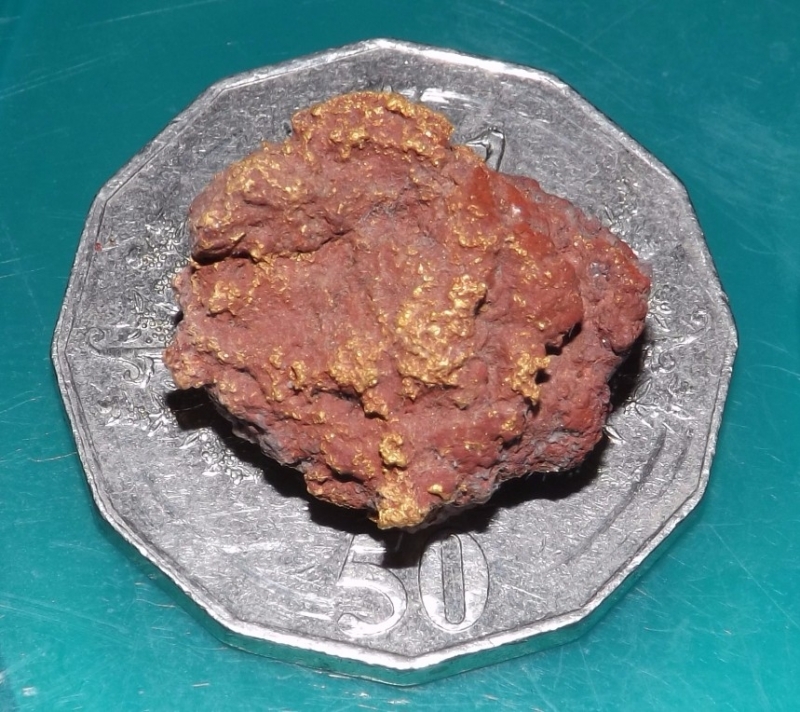
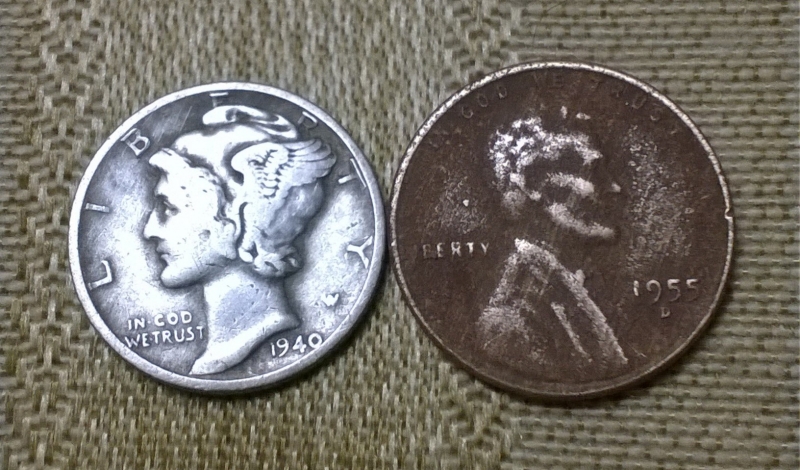
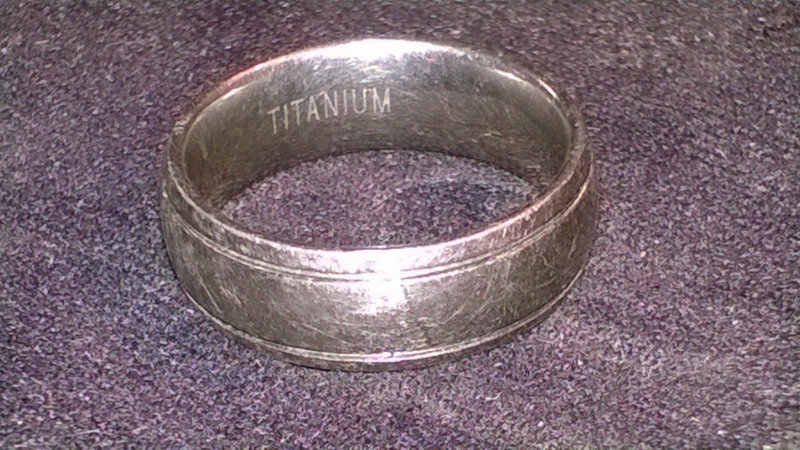
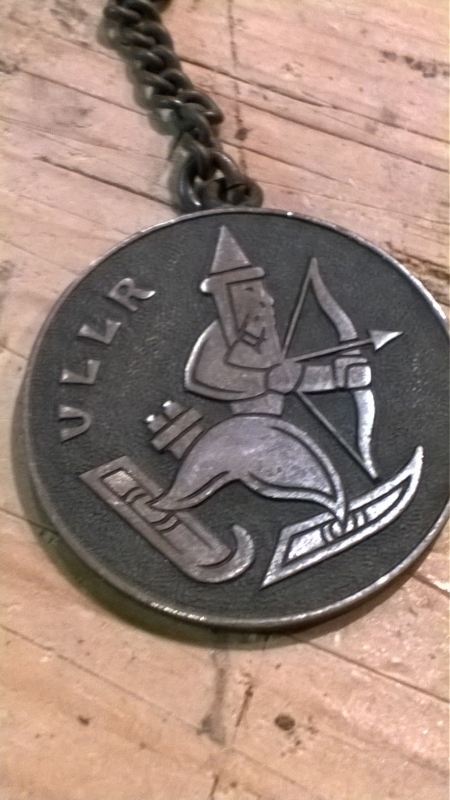
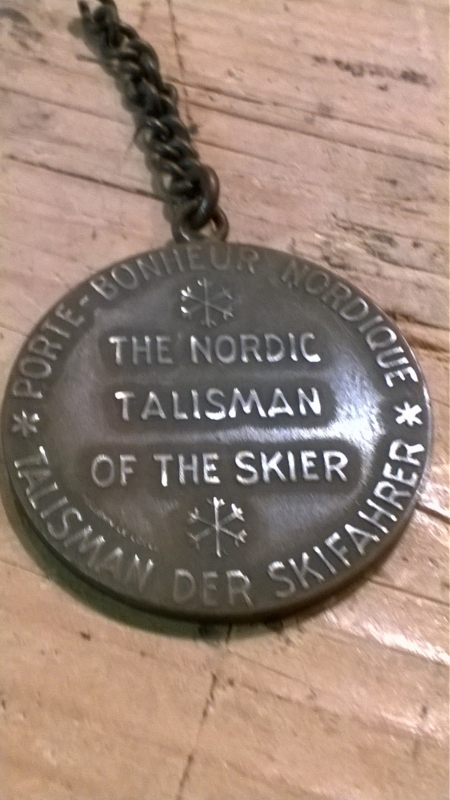
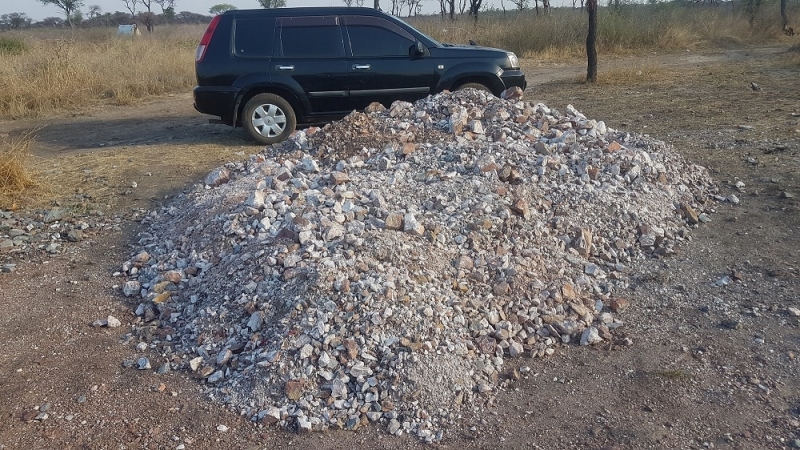
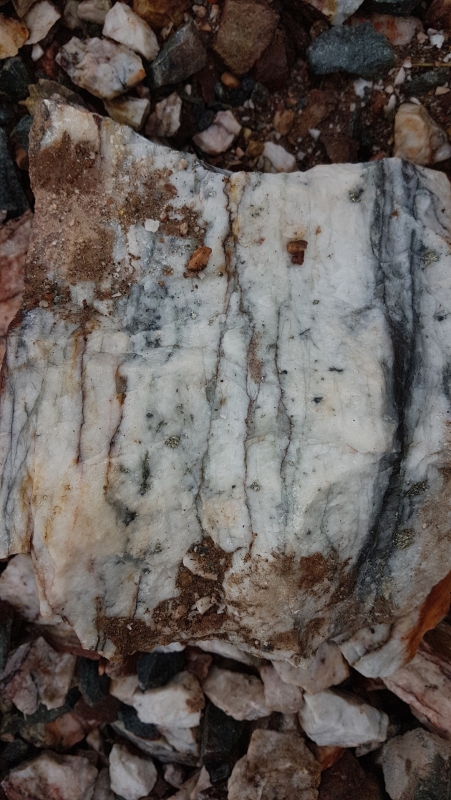
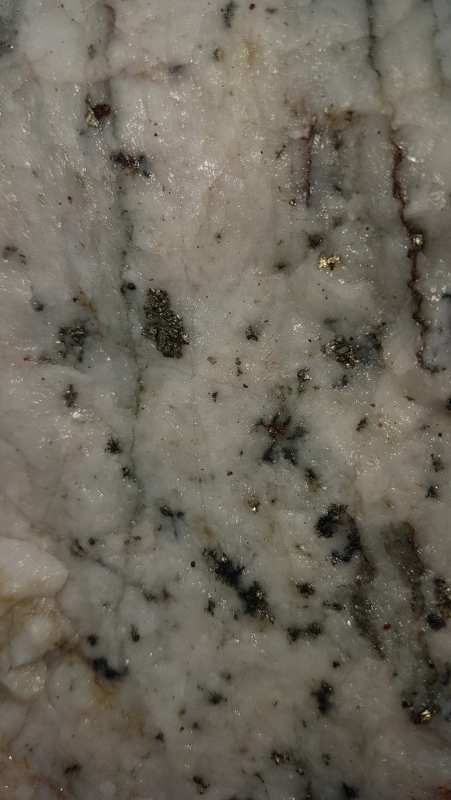
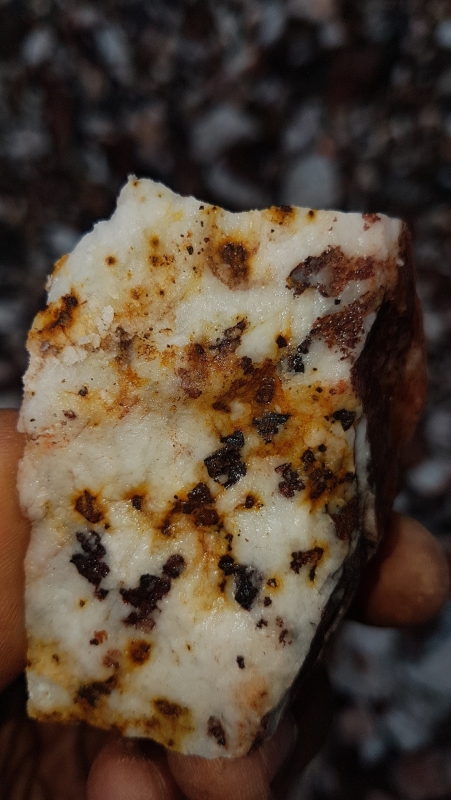
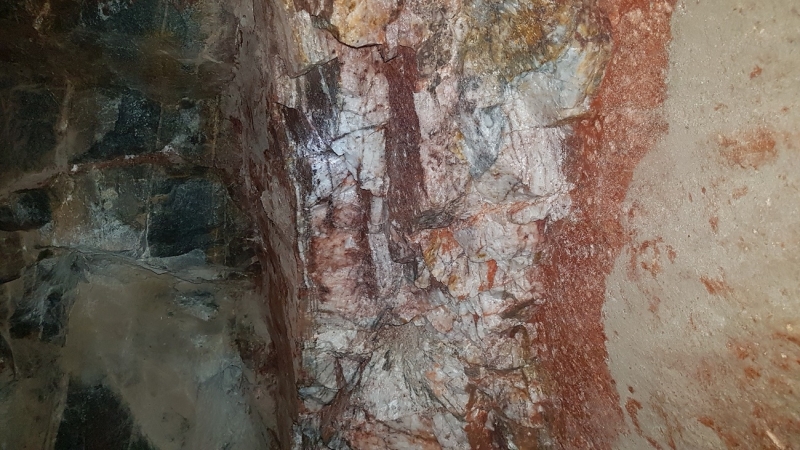
.thumb.jpg.77e4cb5bf39d44bdd2050d2edb7dfdb1.jpg)
